![]()
![]()
![]()
Use LEFT and RIGHT arrow keys to navigate between flashcards;
Use UP and DOWN arrow keys to flip the card;
H to show hint;
A reads text to speech;
18 Cards in this Set
- Front
- Back
- 3rd side (hint)
|
Gravitational Potential Energy |
Is energy an object possesses because of its position on a gravitational field. |
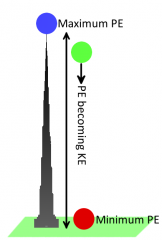
|
|
|
Kinetic Energy |
Is the energy that it possesses due to its motion. It is defined as the work needed to accelerate a body of a given mass from rest to its stated velocity. |
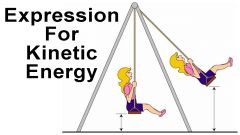
|
|
|
Mechanical Energy |
Is the sum of potential energy and kinetic energy. It is the energy associated with the motion and position of an object. |
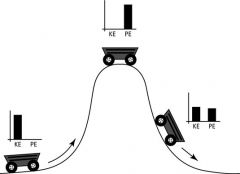
|
|
|
Conservation of Energy |
The law states that the total energy of an isolated system remains constant - it is said to be conserved over time. |

|
|
|
Work |
Work is done when a force that is applied to an object moves that object. |
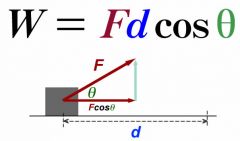
|
|
|
Power |
Is the rate of doing work. It is equivalent to an amount of energy consumed per unit time. |
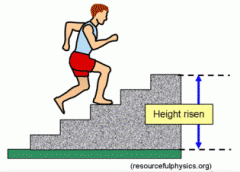
|
|
|
Simple Machines |
Is a mechanical device that changes the direction or magnitude of a force. |
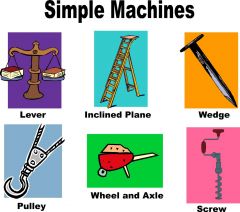
|
|
|
Lever |
A rigid bar resting on a pivot, used to help move a heavy or firmly fixed load with one end when pressure is applied to the other. |
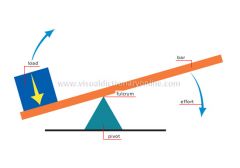
|
|
|
Pulley |
Is a wheel on an axle or shaft that is designed to support movement and change of direction of a taut cable or belt along its circumference. |

|
|
|
Inclined Plane |
Is a flat supporting surface tilted at an angle, with one end higher than the other, used as an aid for raising or lowering a load. |

|
|
|
Wedge |
A piece of wood, metal, or some other material having one thick end and tapering to a thin edge, that is driven between two objects or parts of an object to secure or separate them. |
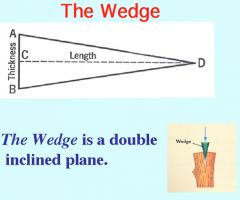
|
|
|
Screw |
A metal fastener having a tapered shank with a helical thread, and topped with a slotted head, driven into wood or the like by rotating, especially by means of a screwdriver. |
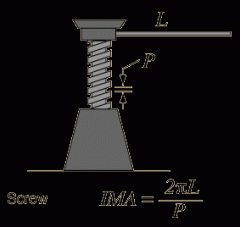
|
|
|
Wheel & Axle |
A simple machine consisting, in its typical form, of a cylindrical drum to which a wheel concentric with the drum is firmly fastened: ropes are so applied that as one unwinds from the wheel, another rope is wound on to the drum. Origin of wheel and axle expand. |
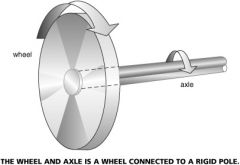
|
|
|
Mechanical Advantage |
Is a measure of the force amplification achieved by using a tool, mechanical device or machine system. |
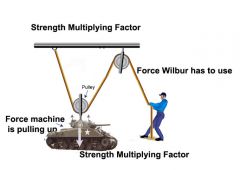
|
|
|
Effort (input) Force |
Is the force that moves an object over a distance by overcoming a resistance force. |
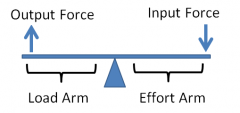
|
|
|
Resistance (output) Force |
Is the force which an effort force must overcome in order to do work on an object via a simple machine. |
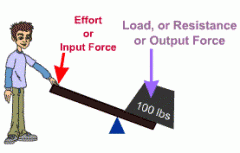
|
|
|
Effort (input) Distance |
The distance from the effort on a lever to the fulcrum. |
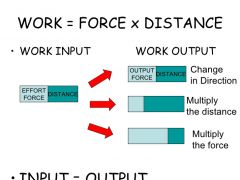
|
|
|
Resistance (output) Distance |
In classical mechanics, the distance from the resistance on a lever to the fulcrum. |

|

